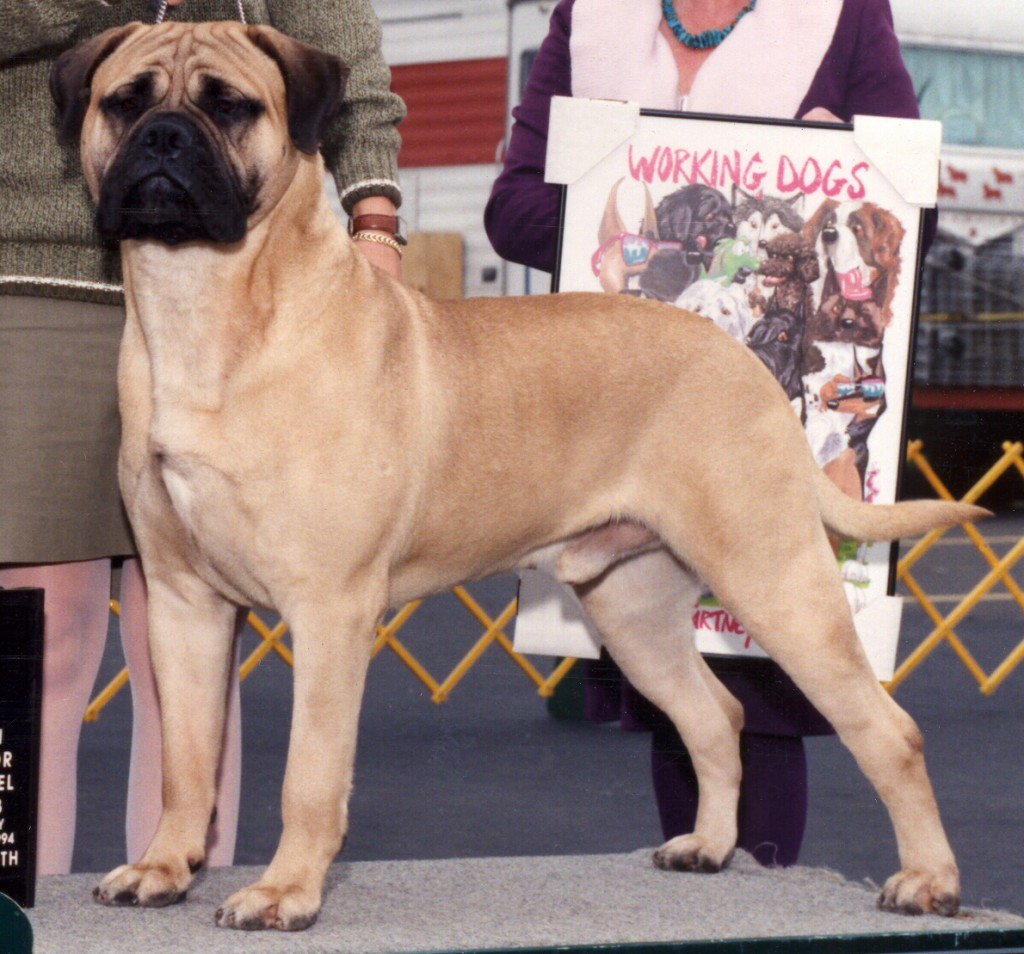
Bit lived to be 12, which is 108 in dog years!
Although not a long-lived dog, with proper exercise and nutrition, as well as regular vet check ups, the Bullmastiff can live most of its life in good health. There are, however, conditions and ailments common in the breed. Regular veterinary visits, as well as an understanding of possible problems, will help your Bullmastiff live a healthy, happy life.
Cancer
According to research performed by the Morris Animal Foundation, cancer is the leading cause of death among dogs over the age of two. It is also the biggest killer of the Bullmastiff. While cancer can strike in many forms, the most common in the breed are lymphosarcoma and mast cell. Cancer is a difficult disease to predict and even harder to prevent, as its genetic inheritability is inconclusive. And as the Bullmastiff is such a stoic dog, most often, once the cancer is detected, the dog only has a few weeks to live. Cancer is thought to be more prevalent in some bloodlines, but I am not aware of any Bullmastiff bloodline that is free from this dreadful disease. The ABA Health and Research committee is currently funding a number of studies on cancer in the bullmastiff.
Hip & Elbow Dysplasia
Hip Dysplasia is the most common cause of rear end lameness in the Bullmastiff. It is basically a problem in the structure of the hip joint. In a normal hip, th head of the femur (thigh bone) should lie solidly in the acetabulum (cup). In hip dysplasia, loose ligaments allow the head to begin to work free, often causing a progressive degeneration of the joint.
Hip and elbow dysplasia are believed to be heritable conditions, although the mode of inheritance is not clear. At this point, it is impossibile to completely eliminate the occurence of hip and elbow dysplasia from one’s breeding stock. However, most reputable breeders will x-ray any dogs used for breeding to lessen the chances of hip and elbow dysplaysia from occurring in the offspring. An OFA or Penn-Hip number indicates the dog has been x-rayed for hip and/or elbow dysplasiz and has been found clear of the condition.
When purchasing a puppy, it is a good idea to obtain a writen guarantee against hip and elbow dysplasia. While there is no true guarantee that the dog will be free of the condition, most breeders will replace the puppy or give a refund should the dog develop severe hip or elbow dysplasia.
As a Bullmastiff owner, keeping the dog lean, feeding a premium quality dog food, and providing the dog with moderate exercise will lessen the chances of the dog developing the symptoms of hip or elbow dysplasia as an adult.
Bloat
Bloat, or gastric torsion, is a life threatening disease that usually affects deep-chested breeds. Symptoms are excessive salivation and drooling, extreme restlessness, abdominal pain, attempts to vomit and defecte, and abdominal distention. The dog looks like it swallowed a watermelon, and whines and groans when its stomach wall is pushed. Immediate veterinary intervention is mandatory; the abdomen must be opened and the twist unwound and tacked to prevent reoccurence.
The cause and prevention of bloat are not widely agreed upon. Many feel that drinking excessively after eating, overeatting, or taking vigorous exercise after a meal can lead to bloat. Some also believe that bloat may be somewhat genetic in nature; that a weakness in the stomach lining that causes bloat can be inherited.
Entropion
This condition causes the eyelid and lashes to roll inward causing irritation and possible ulcerization to the eyeball. It is commonly found in breeds with large heads and loose facial skin. Often entropion is a symptom of a larger problem, such as an ear infection or allergy. Entropion can be effectively treated with surgery, although Bullmastiffs whose eyes have been surgically corrected cannot be shown in conformation and should not be used for breeding.
